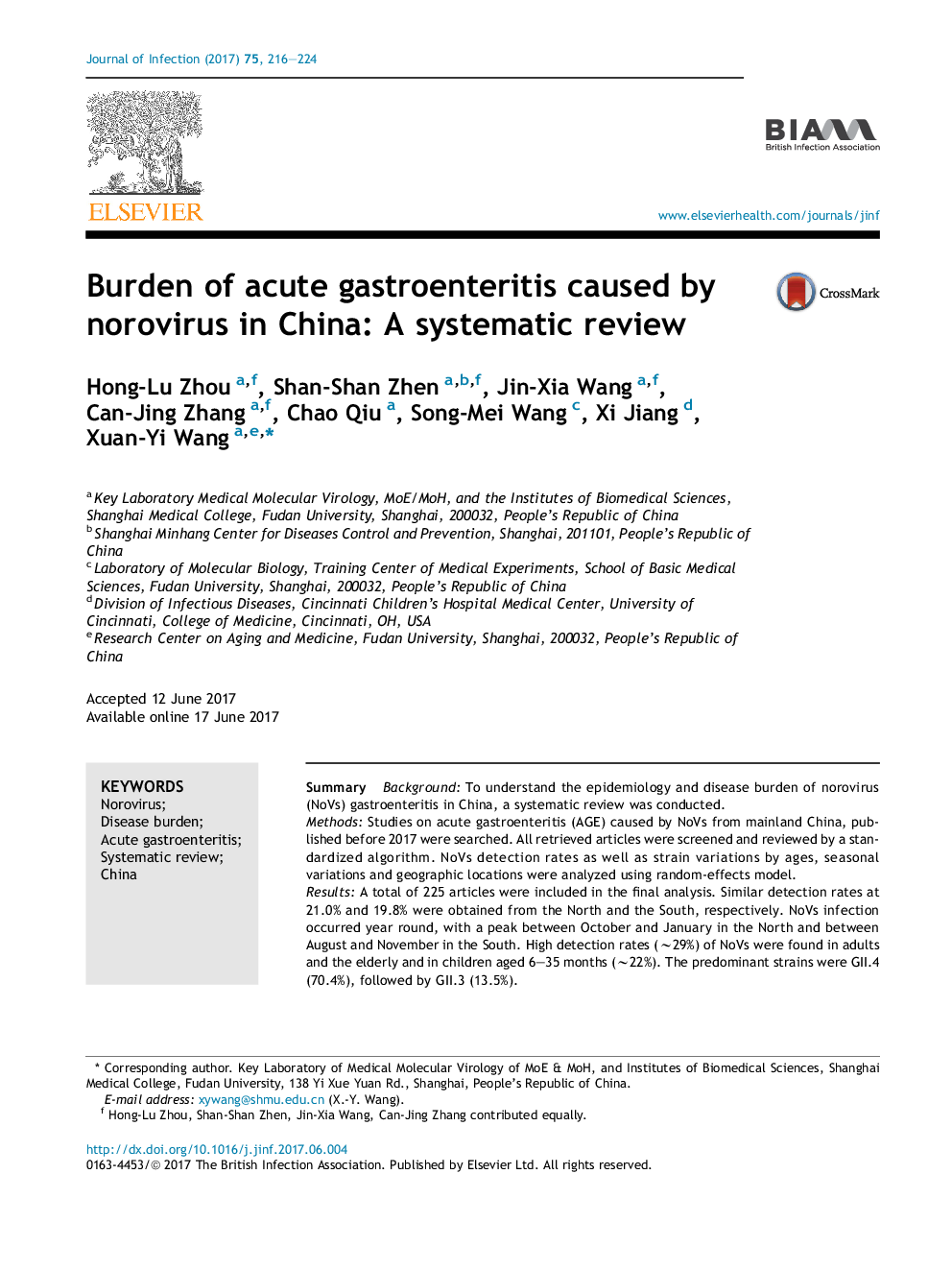| Article ID | Journal | Published Year | Pages | File Type |
|---|---|---|---|---|
| 5668609 | Journal of Infection | 2017 | 9 Pages |
â¢This is the first report on disease burden caused by norovirus in China.â¢Three vaccine candidates are being developed in China, while critical epidemiological information is absent.â¢The “U” shape with lowest rate in children aged 5-17 years seems can't infer that natural immunity does not exceed 2-year.â¢A remarkable incidence of 15.6/100 children/year was estimated among children less than 5 years of age.
SummaryBackgroundTo understand the epidemiology and disease burden of norovirus (NoVs) gastroenteritis in China, a systematic review was conducted.MethodsStudies on acute gastroenteritis (AGE) caused by NoVs from mainland China, published before 2017 were searched. All retrieved articles were screened and reviewed by a standardized algorithm. NoVs detection rates as well as strain variations by ages, seasonal variations and geographic locations were analyzed using random-effects model.ResultsA total of 225 articles were included in the final analysis. Similar detection rates at 21.0% and 19.8% were obtained from the North and the South, respectively. NoVs infection occurred year round, with a peak between October and January in the North and between August and November in the South. High detection rates (â¼29%) of NoVs were found in adults and the elderly and in children aged 6-35 months (â¼22%). The predominant strains were GII.4 (70.4%), followed by GII.3 (13.5%).ConclusionNoVs cause significant disease burden in China which warrants development of vaccines against NoVs, particularly for children and the elderly who are vulnerable to gastroenteritis diseases. To achieve a broad protection, continual monitoring NoV epidemics and strain variations for selection of proper vaccine strains is critical.
